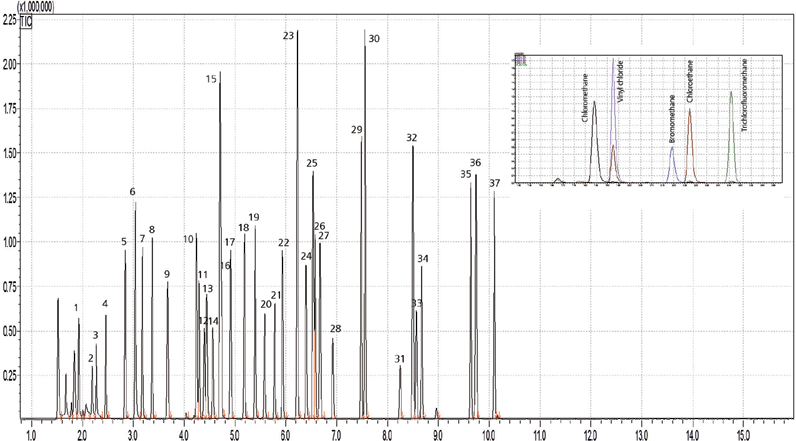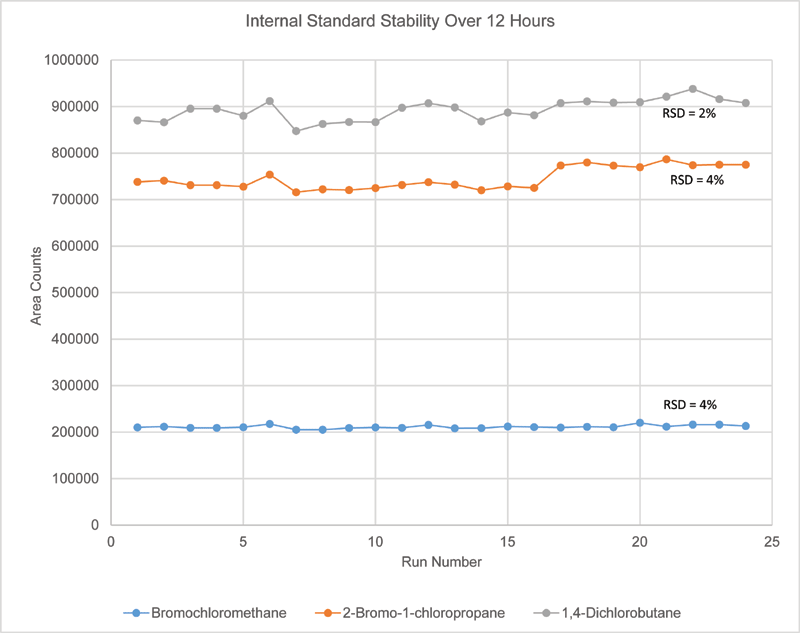Volatile Organic Compounds in Wastewater: Performance of US EPA Method 624 on Modern GC–MS and Purge and Trap Instrumentation
The Application Notebook
US EPA wastewater method 624 Purgeables was originally published as 40 CFR Part 136 Appendix A in the mid 1980s.
US EPA wastewater method 624 Purgeables was originally published as 40 CFR Part 136 Appendix A in the mid 1980s. While instrumentation has advanced, there have been no significant updates to method 624. This paper describes the performance of EPA 624 on modern GC–MS instrumentation.
The US EPA is currently in the process of developing a revision to US EPA Method 624 (1). A study was conducted to evaluate operating conditions for the existing EPA Method 624 component list using updated technology and advanced GC–MS instrumentation.
Experimental
A Shimadzu GCMS-QP2010 SE was configured with a Restek capillary column designed specifically for volatiles analysis. The GC was operated using constant linear velocity mode. A narrow i.d. inlet liner was used to minimize band broadening during transfer to the purge and trap, while still allowing high split injections. Data were acquired in full scan mode. The EST Evolution and Centurion Water/Soil Autosampler were used for extraction, concentration, and sample introduction.
Results
Each day, prior to running samples and at intervals no longer than 12 h an aliquot of BFB was purged and the spectra compared to EPA Method 624 tuning criteria. BFB spectra met all criteria for all samples evaluated and the GC–MS did not require retuning for the entire project (2½ months).
A series of nine calibration standards across the range of 0.5–200 μg/L were prepared. Three internal standards were held constant at 30 μg/L and three surrogates were added at 10 μg/L. A total ion chromatogram (TIC) at 10 μg/L is shown in Figure 1 along with an expanded view of the early eluting light gases.

Figure 1: Total ion chromatogram of a 10 μg/L standard.
Continuing calibration verification (CCV) standards were analyzed as specified in Method 624 and % recoveries were determined. All recoveries were between within 80–105%. Method detection limits (MDL) (2) were determined using replicates of a 0.5 μg/L standard. All MDLs easily exceeded the criteria in US EPA Method 624.
Eight replicate aliquots each of 1.0 μg/L and 20 μg/L were analyzed for precision and accuracy. Recoveries were all between 80% and 120% and %RSD were all ≤15%, exceeding method criteria. Also, surrogate recovery and internal standard responses were monitored. Surrogate recoveries fell within 80–120% for the entire study and internal standard responses remained stable at ≤4% (Figure 2).

Figure 2: Internal standard response over a 12 h period.
Conclusion
Modern GC–MS and purge and trap instrumentation far exceed existing criteria for US EPA Method 624. MDLs can easily be met and a high level of precision and accuracy can be expected across the entire calibration range.
References
(1) Appendix A to Part 136, Methods for Organic Chemical Analysis of Municipal and Industrial Wastewater, Method 624 – Purgeables.
(2) Definition and Procedure for the Determination of the Method Detection Limit, Fed. Regist. 49 (209), Appendix B to Part 136 (1984).

Shimadzu Scientific Instruments, Inc.
7102 Riverwood Drive, Columbia, MD 21046
tel. (800) 477-1227
Website: www.ssi.shimadzu.com

Separation of Ultra-Short and Long Chain PFAS Compounds Using a Positive Charge Surface Column
December 11th 2024A separation of ultra-short and long chain PFAS (C1-C18) is performed on a HALO®PCS Phenyl-Hexyl column along with a HALO®PFAS Delay column which demonstrates excellent retention for both hydrophilic and hydrophobic analytes.












